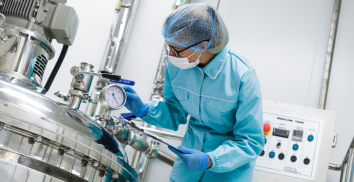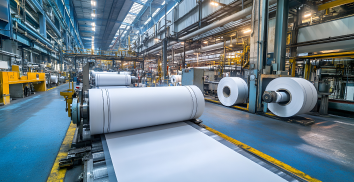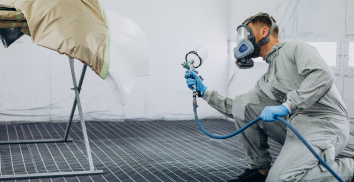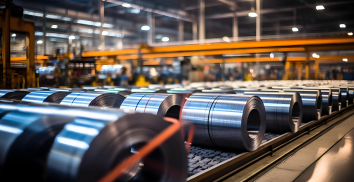Sinner’s Circle Explained: What is it and Why it matters?
In the Process Industry, the process of cleaning is age-old. This process follows the Sinner’s Circle Model. To ensure an effective cleaning process, dive right into the blog.


By Charles Pandian
What is Sinner’s Circle?
In 1959, the German Scientist Herbert Sinner made a remarkable contribution to the science of cleaning. He identified four critical factors responsible for an effective cleaning process. His model, known as Sinner’s Circle or Sinner’s Cycle, is still used as a foundational framework to optimize cleaning processes across industries. This Sinner’s Circle is mainly used in industries that demand stringent standards, such as the pharmaceutical, food, and healthcare industries.
Sinner’s model consists of four factors: time, temperature, chemical action, and mechanical action. Since these four factors are interdependent and, therefore, must be well-optimised to achieve a successful cleaning cycle.
For instance, if you want to save on cleaning solution, the temperature, wash time, or the level of agitation must be increased.
When visually represented by four parts in a circle, these variables are called Sinner’s Circle.
Four Factors of Sinner’s Circle
1. Time
Time is a crucial factor that must be optimised during cleaning. The time required for your cleaning solution to act upon the vessel/equipment must be observed. The time needed to clean depends upon the concentration and the application method. If the parts are soaked in a highly concentrated detergent solution, the time required for cleaning will be much less, and vice versa. Instead, spraying the concentrated detergent solution on the parts will take more time to act upon dirt and dust, thereby increasing the overall cleaning time.
Cleaning your vessel/equipment is similar to washing garments at home. When the dust-covered garments are washed directly, cleaning them takes more time and effort. However, soaking clothes in detergent for a more extended period makes washing away dirt and dust very easy.
2. Temperature
Another critical factor governing cleaning efficacy in most of the scenarios is Temperature. With an increase in temperature, the speed of cleaning increases as well. This is because when the temperature increases, the heat energy is supplied. This heat energy increases the kinetic energy in the detergent molecules, making them move faster. As a result, the time required for cleaning is decreased.
As per the rule, the cleaning efficacy is increased with an increase in the cleaning solution’s temperature, but only up to a certain point. This is the highest temperature at which the cleaning solution performs its action effectively. Beyond this temperature, any degree rise will no longer speed up the cleaning process. Instead, it may cause damage to the parts.
Usually, the part washers employ an aqueous spray cleaning method. These machines can perform best between 140℉ and 180℉. The water used for cleaning must not become too hot, or it will evaporate, leaving unwanted residue behind. Also, the loss of water due to evaporation will affect the continuity of the cleaning process.
Care must be taken that the temperature is not too hot that it could tarnish the parts of the vessel/equipment. For example, the brass parts get tarnished when exposed to extreme heat. The temperature must be reduced, and the washing time needs to be extended to prevent any damage to the parts.
3. Chemical Action
The cleaning solution is chosen depending on the material type and the residue that must be cleaned. Since water is the best solvent, it is the base of all aqueous cleaning solutions. The detergent, inhibitors, and buffers are added to the cleaning solution as required. The concentration and chemistry are customised depending on the application.
Depending on the pH levels, there are four types of solutions:
- Acidic Solution (pH 1-5): These solutions are highly acidic and are not used for general cleaning. These solutions help remove tarnish or rust.
- Neutral Solution(pH 6-9): These solutions have less cleaning power and are best suited to clean vessels made from alloys. Since they are easy to rinse away, they do not leave any residue behind.
- Alkaline Solution (pH 9-12): They are ideal for general cleaning as they effectively remove oil, grease, and organic contaminants.
- Highly Alkaline Solution (pH 12+): They remove heavy grease and carbonized contaminants. When using highly alkaline solutions, they need to be thoroughly rinsed several times to prevent corrosion.
4. Mechanical Action
To ensure thorough cleansing of the vessel/equipment, mechanical movement may be required to remove the stubborn contaminants.
This added force can come from the spray head. The agitating parts like rotating baskets, sprayers, and ultrasonics are required to agitate the parts or the aqueous solution.
- Sprayers: The spray's volume and pressure determine the impingement's extent. The distance between the spray nozzle and the part affects impingement. When the distance between them is less, the impingement is stronger.
- Rotating baskets: The cabinet-style washers employ rotating baskets to move parts while spraying. The part-on-part contact, along with spray contact, helps to remove dirt.
- Vertical Agitation: This agitation technique cleans simple parts without blind holes or unique grooves. In this method, the moving part, a basket, is moved vertically, i.e. up and down repeatedly, to loosen the dirt.
- Ultrasonic: This method uses sound frequency underwater to loosen the stuck-on dirt. Ultrasonics use a process called cavitation, causing the surrounding water molecules to explode when contacting an object. The complex parts, having the grooves and blind holes, are cleaned via this method.
Besides these four factors, rinsing and drying are also the key cleaning components, though not included in the Sinner’s Circle.
Rinsing removes the loosened dirt and any residues left behind after the chemical action of the detergents and solutions.
Some parts need to be well-dried to exit the cleaning stage. With any residual water on the surface, these parts could contaminate the next phase of the manufacturing process.
Conclusion
As we wrap up this discussion, we would like to highlight the importance of finding the right business partner to help you with your cleaning application needs. At Jetspray Innovations, we have been assisting customers with their cleaning needs. Contact us now for advanced and effective cleaning solutions.
Share on
Tags: Product Sampling








